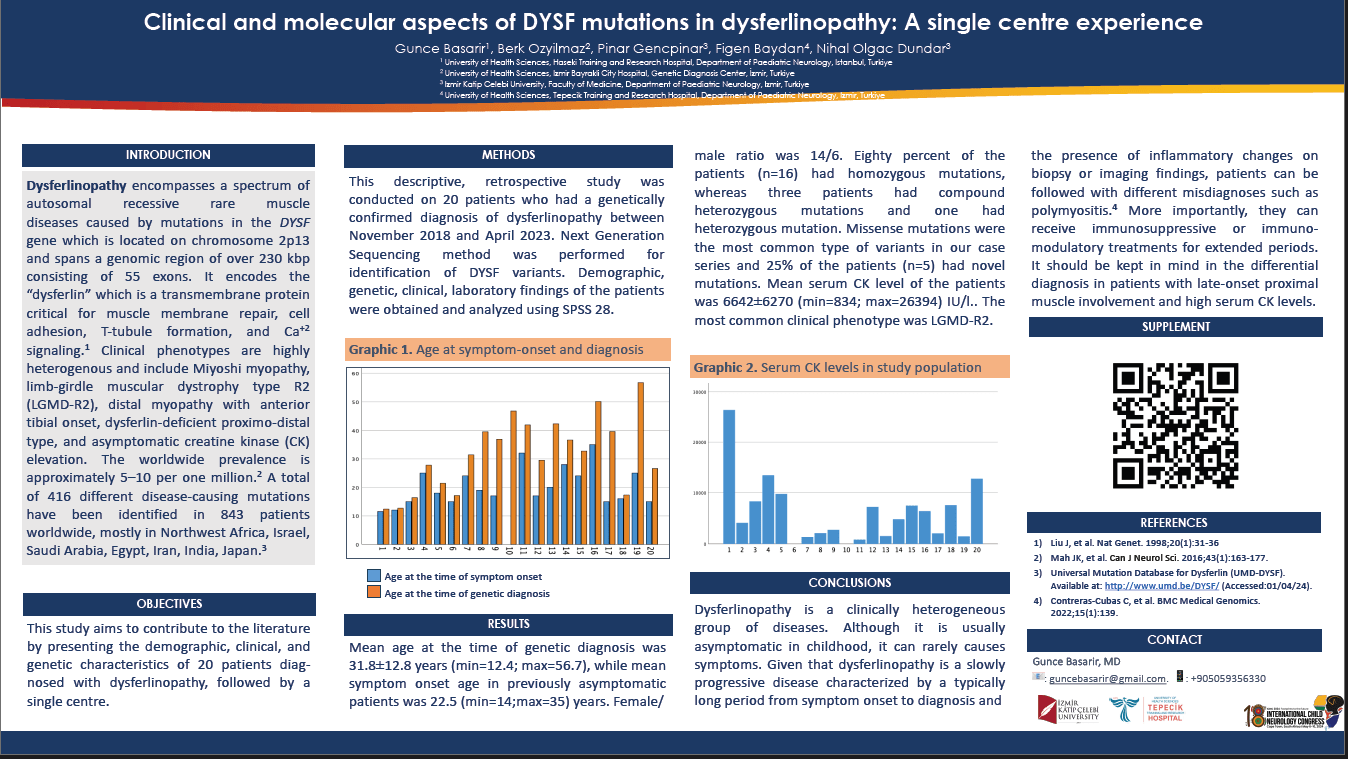Clinical And Molecular Aspects Of DYSF Mutations In Dysferlinopathy: A Single Centre Experience
Introduction: Dysferlinopathy encompasses a spectrum of rare muscle diseases, including Miyoshi myopathy, Limb-girdle muscular dystrophy type 2B (LGMD-2B), distal anterior compartment myopathy, and asymptomatic creatine kinase (CK) elevation. This study aims to contribute to the literature by presenting the demographic, clinical, and genetic characteristics of 20 patients diagnosed with dysferlinopathy, followed by a single centre. Methods: This descriptive, retrospective study was conducted on 20 patients who had a genetically confirmed diagnosis of dysferlinopathy between 2018 and 2023. Next Generation Sequencing method was performed for identification of DYSF variants. Demographic, clinical, laboratory findings of the patients were obtained and analyzed using SPSS 28. Results: Mean age at diagnosis was 31.8±12.8 (min=12.4; max=56.7) years and female/male ratio was 14/6. Eighty percent of the patients (n=16) had homozygous mutations, whereas three patients had compound heterozygous mutations and one had heterozygous mutation. Missense mutations were the most common type of variants in our case series and 25% of the patients (n=5) had novel mutations. Mean serum CK level of the patients was 6642±6270 (min=834; max=26394) IU/l. Mean age at symptom onset in previously asymptomatic patients was 22.5 (min=14; max=35) years. The most common clinical phenotype was LGMD-2B. Conclusion: Dysferlinopathy is a clinically heterogeneous group of diseases. Although it is usually asymptomatic in childhood, it can rarely causes symptoms. It should be kept in mind in the differential diagnosis in patients with late-onset proximal muscle involvement and high serum CK levels.
Gunce Basarir
University of Health Sciences Izmir Tepecik Training and Research Hospital
Turkey
Berk Ozyilmaz
University of Health Sciences Tepecik Training and Research Hospital
Turkey
Pinar Gencpinar
Izmir Katip Celebi University Faculty of Medicine
Turkey
Figen Baydan
University of Health Sciences Izmir Tepecik Training and Research Hospital
Turkey
Nihal Olgac Dundar
Izmir Katip Celebi University Faculty of Medicine
Turkey

Gunce Basarir
University of Health Sciences Izmir Tepecik Training and Research Hospital
Turkey